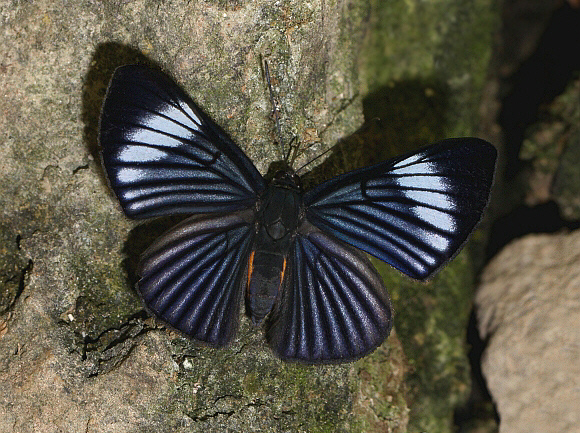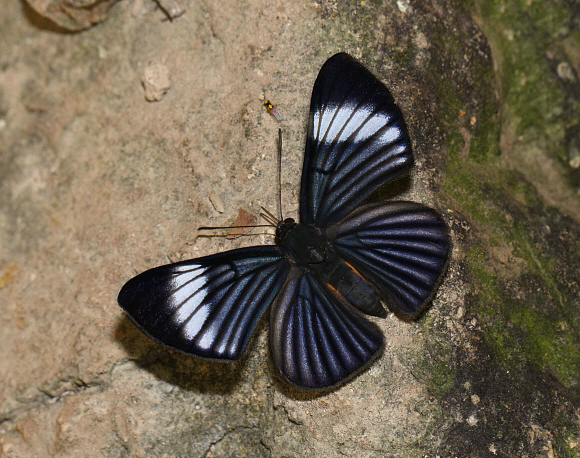 Brachyglenis esthema ecuadorensis, Tingo Maria, Peru – Adrian Hoskins
Brachyglenis esthema ecuadorensis, Tingo Maria, Peru – Adrian Hoskins
Introduction
Brachyglenis esthema bears a superficial resemblance to several other metalmark species including Thisbe hyalina, Chimastrum celina and Pheles heliconides. These species however are only distantly related, being members of 3 different tribes – Riodinini, Nymphidiini and Symmachiini. This suggests that they evolved their patterns independently. All bear more than a passing resemblance to certain day-flying Arctiid moths – notably Calodesma uraneides, a species known to be toxic to birds. This may indicate that the aforementioned Riodinids are Batesian mimics of Calodesma.
It would seem that Brachyglenis, Thisbe, Chimastrum, Pheles, Esthemopsis, Calodesma and various other species are elements in a complex group of Batesian and Mullerian mimics involving several butterfly and moth subfamilies among which are Riodininae, Ithomiinae, Pericopiinae, Geometrinae and Dioptinae. The main features that help to distinguish Brachyglenis from the others in this group are its labial palpi which are white and appressed to the face; and the distinctive wing venation.
There are 4 species in the genus Brachyglenis, variously distributed from Mexico to southern Peru. Brachyglenis esthema is found from Costa Rica to Peru.
 Brachyglenis esthema ecuadorensis, Tingo Maria, Peru – Adrian Hoskins
Brachyglenis esthema ecuadorensis, Tingo Maria, Peru – Adrian Hoskins
Habitats
This species is found in transitional rainforest cloudforest habitats at altitudes between about 400- 900 metres, in the vicinity of small streams.
Lifecycle
Unknown.
Adult behaviour
The male is usually encountered singly, imbibing moisture from boulders, or basking on low foliage in the immediate vicinity of small streams or tiny waterfalls.
